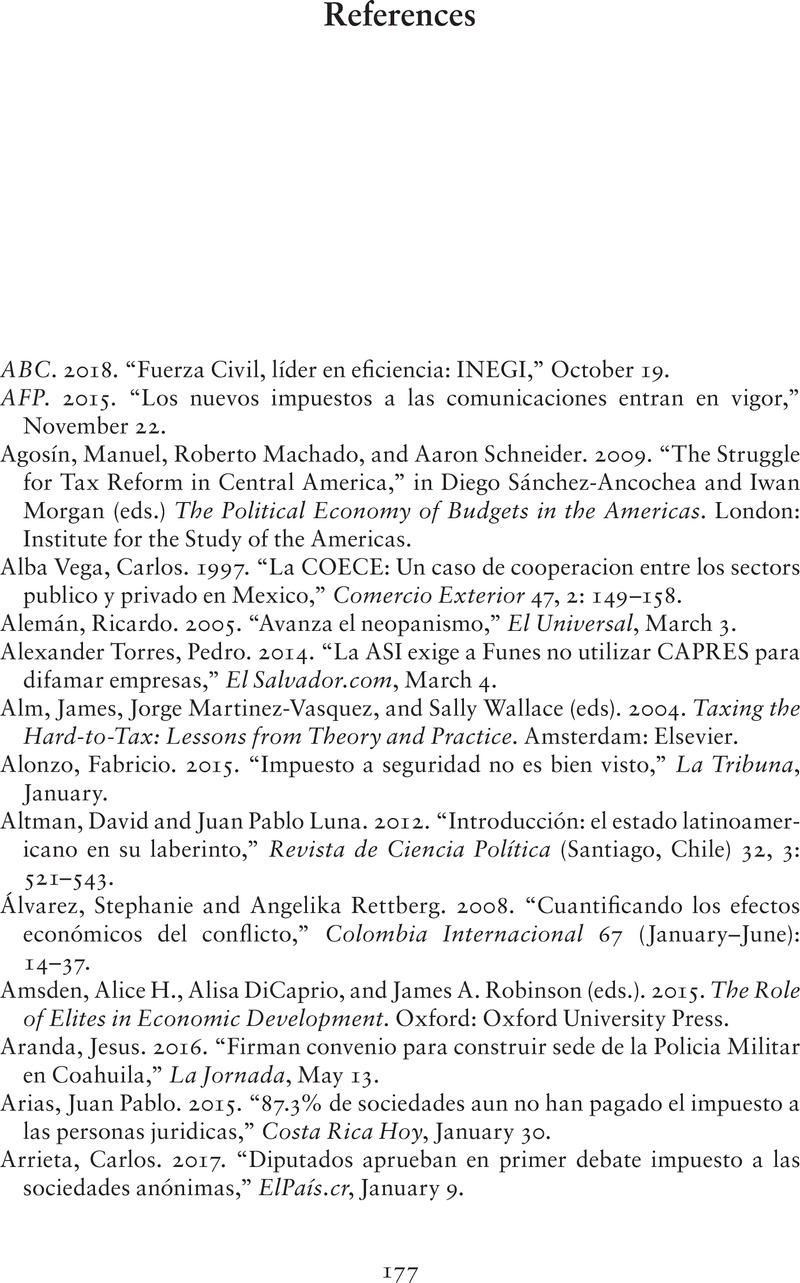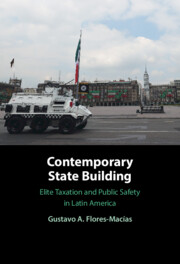Book contents
- Contemporary State Building
- Contemporary State Building
- Copyright page
- Dedication
- Contents
- Figures
- Tables
- Acknowledgments
- 1 Introduction
- 2 Latin America’s Elite Security Taxes
- 3 A Theory of Elite Taxation and the Determinants of Security Taxes
- 4 Colombia’s Targeted Security Taxes
- 5 Costa Rica’s “Soft” Security Taxes
- 6 El Salvador’s Failed and Diffuse Security Taxes
- 7 Mexico’s Uneven Taxation
- 8 Conclusion
- References
- Index
- References
References
Published online by Cambridge University Press: 02 June 2022
- Contemporary State Building
- Contemporary State Building
- Copyright page
- Dedication
- Contents
- Figures
- Tables
- Acknowledgments
- 1 Introduction
- 2 Latin America’s Elite Security Taxes
- 3 A Theory of Elite Taxation and the Determinants of Security Taxes
- 4 Colombia’s Targeted Security Taxes
- 5 Costa Rica’s “Soft” Security Taxes
- 6 El Salvador’s Failed and Diffuse Security Taxes
- 7 Mexico’s Uneven Taxation
- 8 Conclusion
- References
- Index
- References
Summary

- Type
- Chapter
- Information
- Contemporary State Building , pp. 177 - 200Publisher: Cambridge University PressPrint publication year: 2022



